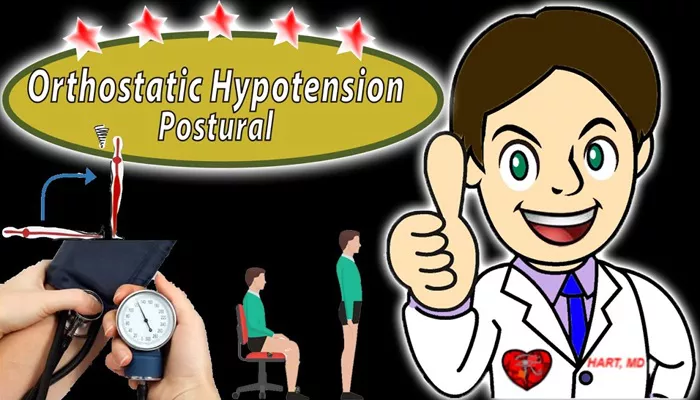Orthostatic hypotension (OH) is a condition where a person’s blood pressure drops significantly when standing up from a sitting or lying position. This can cause dizziness, lightheadedness, or even fainting. Testing for OH helps diagnose this condition early and manage it properly.
This article explains the sit-to-stand test, a simple and effective way to detect orthostatic hypotension. It describes how the test is done, what measurements are important, and how to interpret the results. The information is clear and fact-based for healthcare providers and patients alike.
What Is Orthostatic Hypotension?
Definition and Criteria
Orthostatic hypotension is defined as a fall in systolic blood pressure of at least 20 mmHg or a fall in diastolic blood pressure of at least 10 mmHg within three minutes of standing. This decrease leads to insufficient blood flow to the brain and symptoms like dizziness.
Why It Happens
Normally, when a person stands up, the body quickly adjusts blood vessel tone and heart rate to maintain stable blood pressure. In OH, these mechanisms fail or are slow, causing blood pressure to drop.
Importance of Testing for Orthostatic Hypotension
Who Should Be Tested?
Testing is important for people who experience symptoms such as dizziness, falls, or fainting on standing. It is also useful for older adults, people with autonomic nervous system disorders, diabetes, or those taking medications that affect blood pressure.
Benefits of Early Detection
Early diagnosis allows for proper treatment to prevent falls, injuries, and complications related to low blood pressure.
The Sit-to-Stand Test for Orthostatic Hypotension
What Is the Sit-to-Stand Test?
The sit-to-stand test is a clinical procedure used to measure changes in blood pressure and heart rate when a person moves from sitting to standing. It is an easy, non-invasive test suitable for clinics and bedside evaluations.
Why Use the Sit-to-Stand Test?
This test is simpler and safer than the traditional lying-to-standing test, especially for elderly or frail patients. It requires less space and less time.
How to Perform the Sit-to-Stand Test
Preparation
- Ensure the patient is rested for at least 5 minutes before the test.
- Explain the procedure clearly to the patient to reduce anxiety.
- Use a chair without wheels and with a backrest.
- Have a blood pressure monitor and stopwatch ready.
Step-by-Step Procedure
Measure Baseline Blood Pressure and Heart Rate: Take the patient’s blood pressure and heart rate while sitting comfortably for at least 5 minutes.
Ask the Patient to Stand: The patient stands up quickly but safely from the seated position.
Measure Blood Pressure and Heart Rate at Intervals: Measure immediately upon standing (within 15 seconds), at 1 minute, and at 3 minutes after standing.
Observe Symptoms: Ask the patient if they feel dizzy, lightheaded, or weak during or after standing.
Recording Results
Document the blood pressure and heart rate readings at each interval, along with any symptoms the patient reports. This data helps in diagnosing orthostatic hypotension.
Interpreting the Sit-to-Stand Test Results
Diagnostic Criteria
A significant drop in systolic blood pressure of ≥20 mmHg or diastolic blood pressure of ≥10 mmHg within 3 minutes of standing indicates orthostatic hypotension.
Heart Rate Response
In healthy individuals, heart rate increases upon standing to compensate for blood pooling in the legs. In some cases of autonomic dysfunction, this response is blunted.
Symptoms Correlation
The presence of symptoms like dizziness or fainting combined with significant blood pressure drop confirms the diagnosis and severity of OH.
Other Methods to Test Orthostatic Hypotension
Lying-to-Standing Test
This traditional method involves measuring blood pressure and heart rate while lying down, then after standing. It requires more time and space but provides a complete picture.
Head-Up Tilt Table Test
Used mainly in specialist settings, this test tilts the patient at different angles while monitoring blood pressure and heart rate. It is useful for complex or unclear cases.
Factors Affecting Test Accuracy
Medications
Drugs such as antihypertensives, diuretics, and antidepressants can influence blood pressure readings and should be noted.
Hydration Status
Dehydration can worsen orthostatic hypotension and affect results.
Time of Day
Blood pressure fluctuates during the day. Testing should be done at consistent times when possible.
Patient Cooperation
Clear instructions and patient understanding improve reliability of the test.
Managing Orthostatic Hypotension After Diagnosis
Non-Pharmacological Approaches
- Increase fluid and salt intake under medical supervision
- Wear compression stockings
- Rise slowly from sitting or lying positions
- Perform physical counter-maneuvers like leg crossing
Medications
In some cases, drugs such as fludrocortisone or midodrine are prescribed to raise blood pressure.
Regular Monitoring
Follow-up testing ensures treatment effectiveness and safety.
Conclusion
The sit-to-stand test is a practical and effective method to detect orthostatic hypotension. Proper performance and interpretation can guide timely treatment and reduce risks associated with this condition. Regular testing is important for at-risk populations to prevent falls and improve quality of life.
Related topics:


